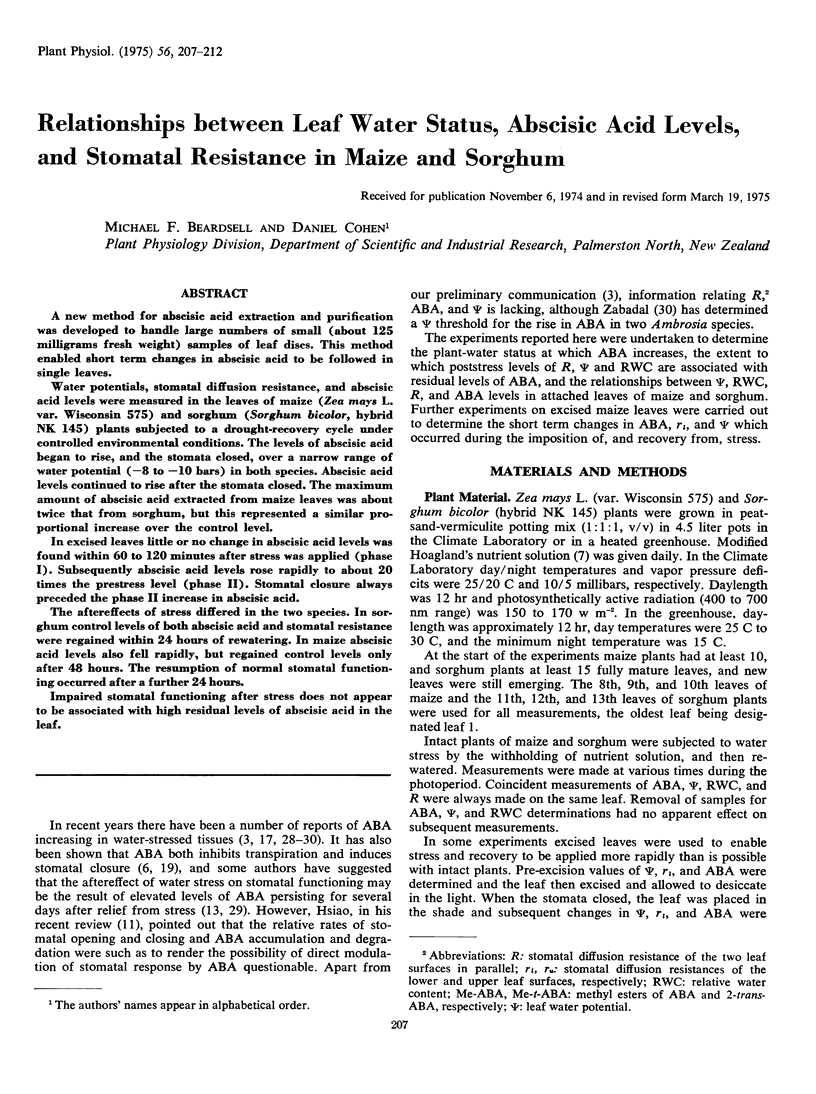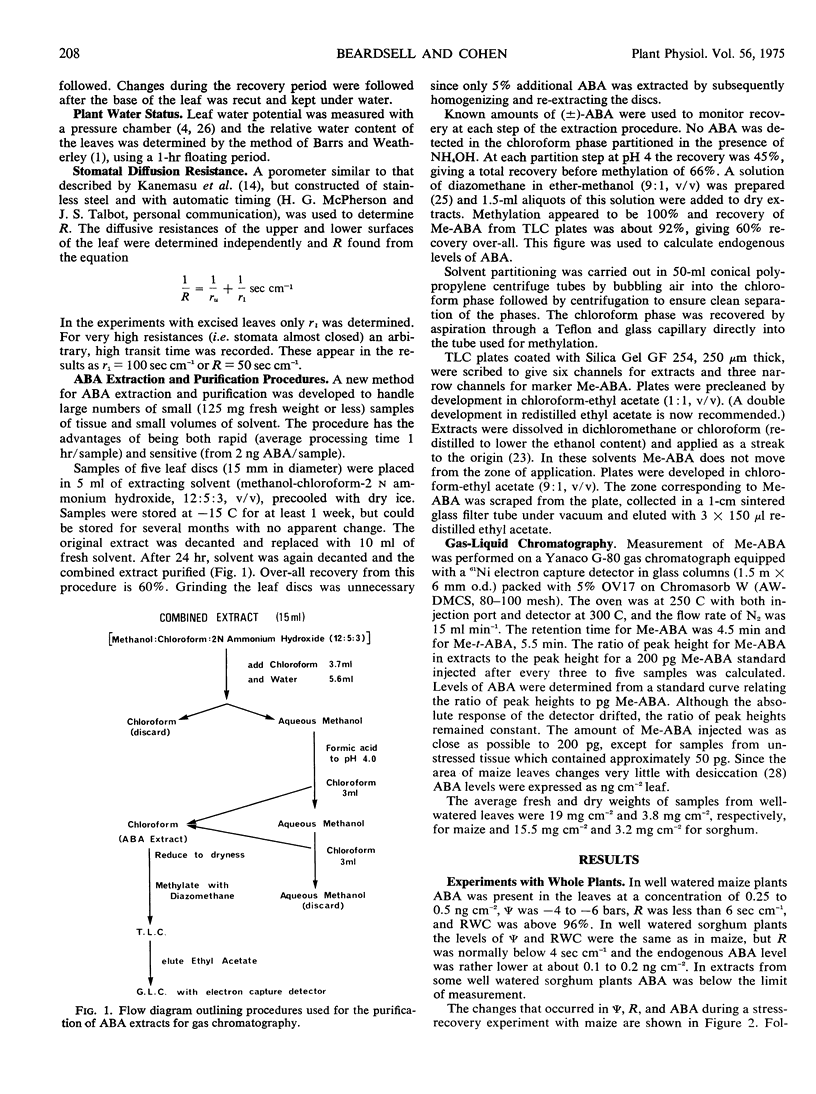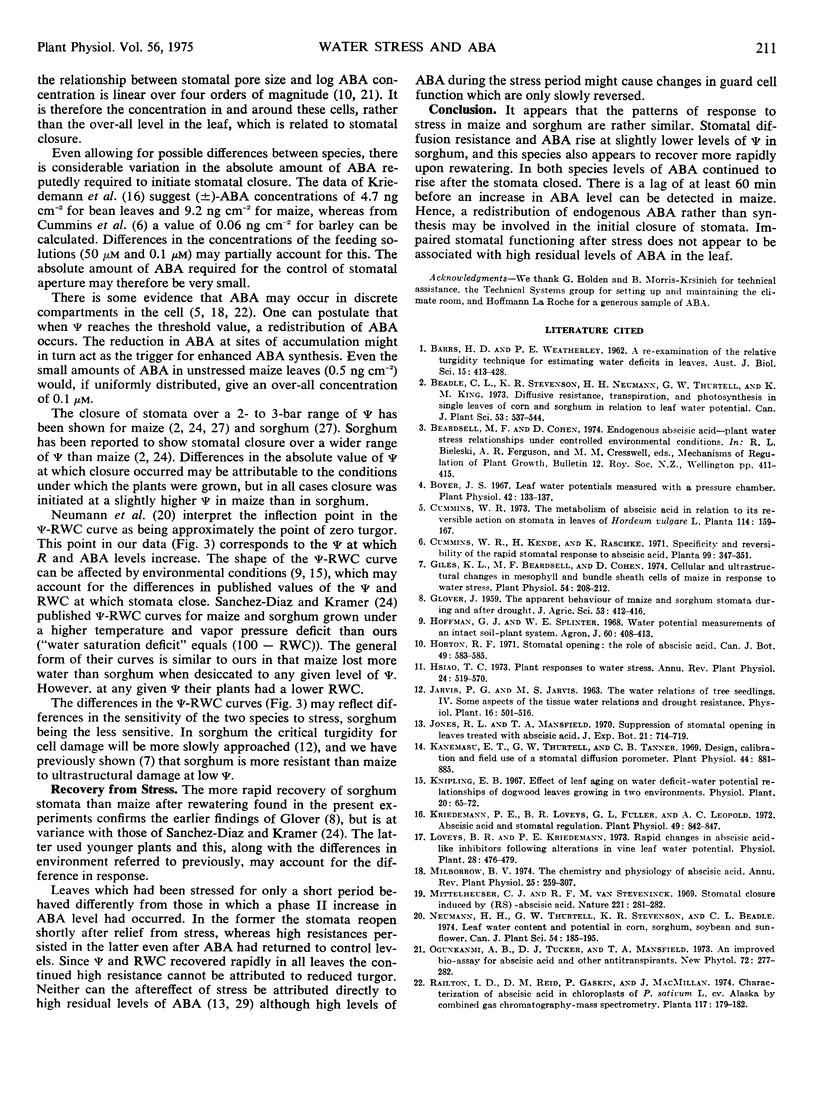Abstract
A new method for abscisic acid extraction and purification was developed to handle large numbers of small (about 125 milligrams fresh weight) samples of leaf discs. This method enabled short term changes in abscisic acid to be followed in single leaves.
Water potentials, stomatal diffusion resistance, and abscisic acid levels were measured in the leaves of maize (Zea mays L. var. Wisconsin 575) and sorghum (Sorghum bicolor, hybrid NK 145) plants subjected to a drought-recovery cycle under controlled environmental conditions. The levels of abscisic acid began to rise, and the stomata closed, over a narrow range of water potential (−8 to −10 bars) in both species. Abscisic acid levels continued to rise after the stomata closed. The maximum amount of abscisic acid extracted from maize leaves was about twice that from sorghum, but this represented a similar proportional increase over the control level.
In excised leaves little or no change in abscisic acid levels was found within 60 to 120 minutes after stress was applied (phase I). Subsequently abscisic acid levels rose rapidly to about 20 times the prestress level (phase II). Stomatal closure always preceded the phase II increase in abscisic acid.
The aftereffects of stress differed in the two species. In sorghum control levels of both abscisic acid and stomatal resistance were regained within 24 hours of rewatering. In maize abscisic acid levels also fell rapidly, but regained control levels only after 48 hours. The resumption of normal stomatal functioning occurred after a further 24 hours.
Impaired stomatal functioning after stress does not appear to be associated with high residual levels of abscisic acid in the leaf.
Full text
PDF





Selected References
These references are in PubMed. This may not be the complete list of references from this article.
- Boyer J. S. Leaf water potentials measured with a pressure chamber. Plant Physiol. 1967 Jan;42(1):133–137. doi: 10.1104/pp.42.1.133. [DOI] [PMC free article] [PubMed] [Google Scholar]
- Giles K. L., Beardsell M. F., Cohen D. Cellular and ultrastructural changes in mesophyll and bundle sheath cells of maize in response to water stress. Plant Physiol. 1974 Aug;54(2):208–212. doi: 10.1104/pp.54.2.208. [DOI] [PMC free article] [PubMed] [Google Scholar]
- Kriedemann P. E., Loveys B. R., Fuller G. L., Leopold A. C. Abscisic Acid and stomatal regulation. Plant Physiol. 1972 May;49(5):842–847. doi: 10.1104/pp.49.5.842. [DOI] [PMC free article] [PubMed] [Google Scholar]
- Roughan P. G., Tunnicliffe C. G. Simple devices for the application of samples as narrow streaks for thin-layer chromatography. J Lipid Res. 1967 Sep;8(5):511–513. [PubMed] [Google Scholar]
- Scholander P. F., Hammel H. T., Hemmingsen E. A., Bradstreet E. D. HYDROSTATIC PRESSURE AND OSMOTIC POTENTIAL IN LEAVES OF MANGROVES AND SOME OTHER PLANTS. Proc Natl Acad Sci U S A. 1964 Jul;52(1):119–125. doi: 10.1073/pnas.52.1.119. [DOI] [PMC free article] [PubMed] [Google Scholar]
- Turner N. C. Stomatal Behavior and Water Status of Maize, Sorghum, and Tobacco under Field Conditions: II. At Low Soil Water Potential. Plant Physiol. 1974 Mar;53(3):360–365. doi: 10.1104/pp.53.3.360. [DOI] [PMC free article] [PubMed] [Google Scholar]
- Zabadal T. J. A water potential threshold for the increase of abscisic Acid in leaves. Plant Physiol. 1974 Jan;53(1):125–127. doi: 10.1104/pp.53.1.125. [DOI] [PMC free article] [PubMed] [Google Scholar]


